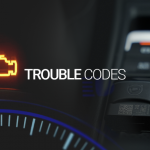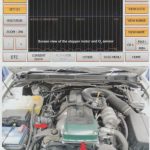Ford diagnostic trouble codes can be found on the 16-pin data link connector, located under the steering column. A removable cover may be required for access. The scan tool manufacturer will provide operating instructions and specific codes. There are several ways to identify and troubleshoot Ford obd codes. Here are a few common issues. If any of the symptoms seem familiar, the problem may be an electrical fault. Read on for more information on Ford obd code diagnosis.
HO2S Sensor circuit slow response (HO2S-11)
In many cases, a problem with the HO2S sensor is related to other faults, not to its function. HO2S sensors are generally categorized by their location, and their names are the same no matter the type of engine. Regardless of the sensor’s function, diagnosis, or fault, there will always be at least one sensor in the upstream and downstream circuits.
The HO2S sensor is a component of the exhaust system that measures the amount of oxygen in the gas stream. It is responsible for providing feedback to the PCM regarding the rich/lean condition of the vehicle. The fuel injector pulsewidth is corrected based on the Long and Short Term Fuel Trims, and is adjusted to compensate for variations in the fuel system. If this component of the exhaust system fails to function properly, air/fuel control is compromised. In such a case, the fuel trim table has reached its adaptive limit. The DTC sets the MIL and activates the car’s ECO mode.
In order to diagnose HO2S-11, you will need to know what this code means. A code of this type indicates a malfunction in the catalytic converter. A malfunction in this component will cause the vehicle to exhibit a low fuel efficiency. If the MIL illuminates, it means the catalyst is not operating efficiently and must be repaired. If the catalytic converter is too weak, the emissions may be too high.
A slow response from the O2 sensor means that your vehicle is experiencing fuel-related problems. The oxygen sensor is located on Bank 1 of the engine housing. It should respond to the fuel-cutoff signal at least every two seconds. If the sensor does not respond properly, your vehicle may not start at all or stall while accelerating. If this is the case, the check engine light will illuminate, and you’ll experience immediate loss of power.
Ignition Engine Speed Input Circuit Malfunction
The P0320 error code on your vehicle indicates a malfunction in your ignition/distributor engine speed input circuit. This problem can be caused by a malfunction in one of the car’s sensors, such as the crankshaft position sensor or the camshaft position sensor. The PCM will send this code if it cannot detect a signal from these sensors.
The PCM continuously monitors the ignition engine speed sensor input signal to determine if it has failed. When the signal indicates two consecutive erratic profile ignition pickup (PIP) pulses, the test will fail. This will set off the P0320 code. You should make an appointment with your dealer to have your vehicle diagnosed and fixed. This can save you money and time in the long run.
P0320 is one of the most common OBD2 trouble codes on cars, indicating an issue in your car’s ignition and distributor engine speed input circuit. If your car has received this code, the onboard diagnostic computer will store it as a message on the dashboard. Once your vehicle’s check engine light turns on, you will need to find the culprit.
Depending on the type of sensor and wiring in your vehicle, you should try to replace the sensor or wires that connect it. If the problem persists, you should check the other parts of the system before attempting to fix the car’s Ignition Engine Speed Input Circuit. The computer uses the information it receives from these sensors to control your engine’s performance.
Computer or output circuit faults
Some of the common causes of overlean or rich codes on Fords may be due to a faulty oxygen sensor. In this case, the ground connection to the sensor is faulty. If this is the case, the Check Engine Light will no longer illuminate, but the vehicle will continue to run with the error code stored. Computers can also get the incorrect information from sensors if the ground connection is bad.
A P0128 code is a general problem associated with the fuel and air metering subsystem. This code does not specify the exact cause of a problem, but is still indicative of a faulty circuit or component. The P0128 code is not manufacturer-specific, and can be interpreted according to SAE definitions. The P0128 code means the temperature of the engine coolant is below the thermostat-regulated temperature.
If you’re having trouble diagnosing a Ford’s engine, you may need a special tool. OBD-II diagnostic tools can be purchased at most auto parts stores, but some of them require a vehicle with the OBD-II connector. If the OBD-II connector is not visible, you’ll have to use a diagnostic tool that connects to the OBD-II port, which is typically located in the steering column on the left side. You’ll also need to buy a special adapter for vehicles before 1996.
The trouble code does not specify the exact component that has a fault. It indicates the circuit associated with the fault. Sometimes the wires connecting the sensor to the computer may be faulty. Other times, an upstream component that affects the fuel and ignition system may cause a false signal. The problem may also be due to electromagnetic interference or other factors. Therefore, it is important to know your vehicle’s diagnosis and repair process.
Fuel or air metering problems
OBD code P0171 means that the air-fuel mixture is too lean in the engine. This problem can be caused by a number of issues, including too much or too little fuel. If the engine continues to run with a code P0171, it will eventually damage the fuel system by increasing the combustion temperature. Fortunately, there are a number of ways to diagnose this problem.
The first step to troubleshooting any type of problem in an automobile is determining the cause. OBD codes are classified into two categories: manufacturer-specific and generic. Generally, the first digit is generic and applies to all vehicles. Usually, the second digit is manufacturer-specific. The first two digits of a code, “P0219” indicates a problem in the powertrain. The second digit (P1) is a manufacturer-specific code. In this case, the issue is with the fuel or air metering system or mass air flow sensor.
Another important problem is related to fuel metering. In addition, unburned fuel may reach the exhaust system, damaging the catalytic converter. A technician can determine the cause of the code by reading the car’s obd-iii computer. The Ford manufacturer has developed a cycle for cleaning the MAF sensor. The higher the current, the more likely the MAF sensor is to be the cause of the problem.
When the PCM is unable to adjust the air-fuel mixture, it creates a code indicating fuel or air metering problems. This problem is usually in the #1 cylinder, as opposed to other cylinders. Inline four-cylinder engines have one bank, while inline six-cylinder engines have two banks and three cylinder groups. Therefore, a P0171 code indicates a problem with air-fuel metering.
Ignition System
You can use an OBD-II scanner to identify the P0358 code on your car’s Ignition System for Ford OBD. If the code is not shown on the scanner, check the connection and try another auxiliary power outlet. Most OBD-II equipped cars use a coil-on-plug system for ignition spark. The coil is secured to the engine with a spark plug wire or a plug boot. If the code remains, replace the ignition coil.
You can use the codes to diagnose a faulty ignition coil. The easiest way to determine if the coil is defective is to swap it with another one. A misfire code for cylinder 2 will show up as P0352 if the cylinder is the forward most. For code P0352, swapping the ignition coil is the best solution. Otherwise, you can monitor the cylinder and see whether the misfire code has moved.
If you encounter the P0355 diagnostic trouble code, you may need to repair the Ignition System of your vehicle. This is because it indicates a problem with the powertrain control module. The ignition coils are responsible for creating a high voltage that the spark plugs need to ignite. Without a functioning ignition coil, your car may stumble or not start at all. To avoid any further problems, it’s important to take your car to a mechanic as soon as possible.
The P0355 code is an indicator that your car’s ignition coils are not receiving the correct electrical signals. If you see this code, it means that there is a problem with the ignition coil “E” circuit. A good mechanic should be able to diagnose and repair the problem. The P0355 code is caused by a malfunction in the ignition coil circuit and will illuminate the Check Engine Light on the dashboard.






